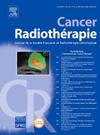象限项目:通过临床审计提高放射程序的质量和安全
IF 1.4
4区 医学
Q4 ONCOLOGY
引用次数: 0
摘要
目的:“通过诊断(包括介入)放射学、放射治疗和核医学(包括治疗)的临床审计提高质量”(象限)项目旨在全面评估整个欧洲在电离辐射的医疗应用方面的临床审计实施状况。中心目标是提高放射程序的质量和安全标准。这一举措源于这样一种认识,即一致和严格的临床审计是提高患者治疗效果和遵守癌症放射治疗安全法规的基础。该项目旨在解决临床审计如何在整个欧洲被应用观察到的变化。材料和方法象限项目采用综合方法收集数据。这包括对现有文献的广泛回顾,欧洲法规,以及与放射程序临床审计相关的国际指南。开展了全国调查,与欧盟成员国和其他选定国家的代表接触,收集有关国家框架、方法、现有障碍和促进因素的信息。深入的案例研究,包括实地考察和与各种利益攸关方(如医疗保健专业人员和政策制定者)的访谈,提供了更深入的见解。与医学物理学、放射肿瘤学和质量保证方面的专家进行的专家咨询进一步丰富了数据。还举办了讲习班,使国家利益攸关方参与讨论临床审计的法律要求、好处和良好做法。对收集到的数据进行了系统分析,以确定主要趋势、共同挑战、成功的战略和成熟的改进领域,从而制定基于证据的建议。结果:该项目观察到欧洲各国在临床审计项目的采用和成熟度方面存在显著差异,甚至在单个国家内也是如此。虽然一些国家表现出完善的做法,特别是在放射治疗的剂量学审计方面,但往往缺乏涵盖所有放射治疗程序的广泛和全面的临床审计方案。为审计目的而收集的数据经常不一致,在患者数据登记、诊断、治疗细节和不良事件记录中都有与标准做法的常见偏差。许多国家报告说,分配给临床审计的财政和人力资源有限。还发现保健专业人员普遍缺乏对临床审计的具体要求和好处的认识。组织文化有时会对系统的质量改进计划产生阻力。注意到数据质量方面的挑战和为审计目的而手工输入数据的负担。此外,由于在国家一级缺乏中央协调,审计工作往往是分散的。临床审计实施中观察到的差异强调了在整个欧洲建立一个更加协调和稳健的方法的必要性。标准化方法的缺乏阻碍了机构和国家之间有效制定基准和分享最佳做法。资源有限和缺乏认识突出表明需要增加投资和有针对性的教育运动,以促进不断提高质量的文化。已确定的数据收集不一致表明了一个关键的干预领域,表明需要改进数字基础设施和标准化报告机制,以促进有意义的审计。特别是放射治疗,研究结果强调,虽然剂量测定等某些方面得到了很好的审核,但对整个治疗途径(包括先进技术和多学科团队互动)更广泛、更系统的审核往往不发达。结论:QuADRANT项目成功地提供了整个欧洲放射学程序临床审计实践的全面概述,确定了成就和重大缺点。它强调了加强国家基础设施、增加资源分配和提高临床审计优先级的迫切需要。该项目的成果作为辐射防护系列的一部分由欧洲委员会公布。此外,该项目的见解有助于形成欧洲委员会关于临床审计的建议,为协调国家临床审计系统建立了重要框架。该项目的持续影响在随后的倡议中很明显,如欧洲临床审计实施(claude - it)项目,旨在改善欧盟成员国放射程序的临床审计实践。本文章由计算机程序翻译,如有差异,请以英文原文为准。
The QuADRANT project: Enhancing quality and safety in radiological procedures through clinical audit
Purpose
The project entitled “Quality Improvement Through Clinical Audit in Diagnostic (Including Interventional) Radiology, Radiotherapy and Nuclear Medicine (Including Therapies)” (QuADRANT) was conceived to thoroughly assess the state of clinical audit implementation across Europe, regarding the medical application of ionizing radiation. The central aim was to elevate the quality and safety standards in radiological procedures. This initiative arose from the understanding that consistent and rigorous clinical audit is fundamental for enhancing patient outcomes and adhering to safety regulations in cancer treatment using radiation. The project aimed to address the observed variations in how clinical audit was being applied across Europe.
Material and methods
The QuADRANT project employed a comprehensive methodology to gather data. This included an extensive review of existing literature, European regulations, and international guidelines pertinent to clinical audit in radiological procedures. National surveys were conducted, reaching out to representatives from European Union member states and other selected countries to collect information on national frameworks, methodologies, existing barriers, and facilitating factors. In-depth case studies, involving site visits and interviews with various stakeholders such as healthcare professionals and policymakers, provided deeper insights. Expert consultations with specialists in medical physics, radiation oncology, and quality assurance further enriched the data. Workshops were also held to engage national stakeholders in discussions about legal requirements, benefits, and good practices of clinical audit. The collected data was systematically analysed to identify key trends, common challenges, successful strategies, and areas ripe for improvement, leading to the formulation of evidence-based recommendations.
Results
The project observed significant variations in the adoption and maturity of clinical audit programs across European countries, even within individual nations. While some countries demonstrated well-established practices, particularly concerning dosimetry audits in radiotherapy, a widespread and comprehensive clinical audit program covering all radiological procedures was often lacking. Data collection for audit purposes was frequently inconsistent, with common deviations from standard practice noted in patient data registration, diagnosis, treatment details, and the recording of adverse events. Many countries reported limited financial and human resources allocated to clinical audit. A general lack of awareness among healthcare professionals regarding the specific requirements and benefits of clinical audit was also identified. Organizational culture sometimes presented resistance to systematic quality improvement initiatives. Challenges were noted in data quality and the burden associated with manual data entry for audit purposes. Furthermore, a lack of central coordination at the national level often resulted in fragmented audit efforts.
Discussion
The observed variations in clinical audit implementation highlight the necessity for a more harmonized and robust approach across Europe. The absence of standardized methodologies impedes effective benchmarking and the sharing of best practices among institutions and countries. The resource limitations and lack of awareness underscore a need for increased investment and targeted education campaigns to promote a culture of continuous quality improvement. The identified data collection inconsistencies indicate a critical area for intervention, suggesting the need for improved digital infrastructure and standardized reporting mechanisms to facilitate meaningful audits. For radiotherapy specifically, the findings emphasize that while some aspects like dosimetry are well-audited, a broader, more systematic audit of the entire treatment pathway, including advanced technologies and multidisciplinary team interactions, is often underdeveloped.
Conclusion
The QuADRANT project successfully provided a comprehensive overview of clinical audit practices in radiological procedures throughout Europe, identifying both achievements and substantial shortcomings. It underscored the critical need for strengthening national infrastructure, increasing resource allocation, and elevating the prioritisation of clinical audit. The project outcomes were published by the European Commission as part of Radiation Protection Series. Furthermore, the project's insights were instrumental in shaping the European Commission's recommendations on clinical audits establishing a crucial framework for harmonizing national clinical audit systems. The ongoing impact of the project is evident in subsequent initiatives like the Clinical Audit Implementation in Europe (CLAUD-IT) project on improving clinical audit practice in European Union member states radiological procedures.
Objectif de l’étude
Le projet intitulé « Quality Improvement Through Clinical Audit in Diagnostic (Including Interventional) Radiology, Radiotherapy and Nuclear Medicine (Including Therapies) » (QuADRANT) a évalué l’implémentation de l’audit clinique dans les procédures radiologiques en Europe pour améliorer la qualité et la sécurité des soins.
Matériel et méthodes
La méthodologie inclus des revues de littérature, des enquêtes nationales, des études de cas, des consultations d’experts et des ateliers.
Résultats
L’analyse des résultats a montré des variations importantes dans l’application des audits, un manque de programmes complets et standardisés, des ressources limitées, une faible sensibilisation et des défis liés à la collecte de données. Pour y remédier, le projet a recommandé la coordination nationale, le renforcement du cadre réglementaire, le soutien des sociétés professionnelles, l’utilisation de facilitateurs, l’intégration de l’audit dans l’accréditation et la certification, l’amélioration de la formation des professionnels de la santé, l’implication des patients et le partage des bonnes pratiques.
Conclusion
Le projet a eu un impact significatif, influençant la publication de la Commission européenne « Radiation Protection Series No. 198 » et la Recommandation (UE) 2024/1112. Son héritage se poursuit avec des initiatives comme le projet intitulé Clinical Audit Implementation in Europe (CLAUD-IT), qui vise à développer des outils informatiques et des lignes directrices pour les audits en radiologie et médecine nucléaire.
求助全文
通过发布文献求助,成功后即可免费获取论文全文。
去求助
来源期刊

Cancer Radiotherapie
医学-核医学
CiteScore
2.20
自引率
23.10%
发文量
129
审稿时长
63 days
期刊介绍:
Cancer/radiothérapie se veut d''abord et avant tout un organe francophone de publication des travaux de recherche en radiothérapie. La revue a pour objectif de diffuser les informations majeures sur les travaux de recherche en cancérologie et tout ce qui touche de près ou de loin au traitement du cancer par les radiations : technologie, radiophysique, radiobiologie et radiothérapie clinique.
 求助内容:
求助内容: 应助结果提醒方式:
应助结果提醒方式:


